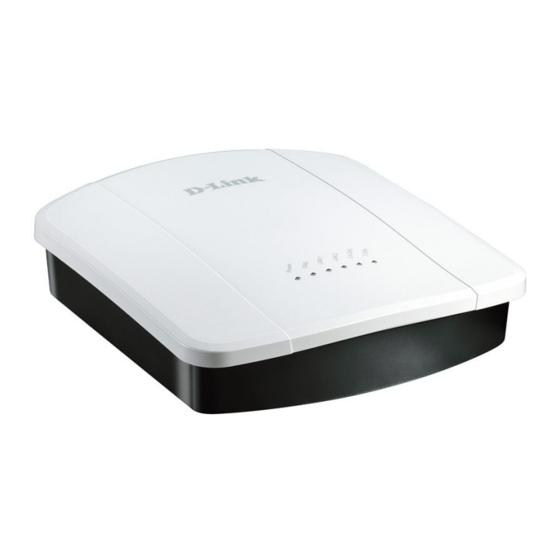
D-Link DWL-8610AP Install Manual
Hide thumbs
Also See for DWL-8610AP:
- Administrator's manual (130 pages) ,
- User manual (754 pages) ,
- Quick installation manual (11 pages)
Advertisement
Advertisement
Table of Contents

Summary of Contents for D-Link DWL-8610AP
-
Page 2: Package Contents
CD-ROM Note: Using a power supply with a different voltage than the one included with the DWL-8610AP will cause damage and void the warranty for this product. If any of the above items are missing, please contact your reseller. System Requirements Minimum System Requirements: •... -
Page 3: Hardware Overview
The light will blink when there is traffic through LAN port. POWER - The light will blink during boot up. Once solid, the access point is ready. DWL-8610AP Install Guide... -
Page 4: Installing The Hardware
Installing the Hardware Console Port Reset Button Power Receptor DWL-8610AP Install Guide... - Page 5 1. Directly connect the access point to a computer. You may then configure the access point through its graphical user interface (GUI) 2. Connect the access point to your computer using the included console cable. You may then configure the access point through its command line interface (CLI) DWL-8610AP Install Guide...
- Page 6 Mounting Plate Assembly Step 1: Insert the provided wall anchors in the wall where the mounting plate will be attached. Step 2: Use the provided screws to secure the mounting plate on the wall. DWL-8610AP Install Guide...
- Page 7 Step 3: Attach the remaining screws securely to the back of the DWL-8610AP. Step 4: Attach the DWL-8610AP to the mounting plate. DWL-8610AP Install Guide...
- Page 8 Step 5: Slide the DWL-8610AP down into the grooves on the mounting plate to secure it to the plate. Your Setup is Complete DWL-8610AP Install Guide...
- Page 9 Notes DWL-8610AP Install Guide...
- Page 10 Notes DWL-8610AP Install Guide...
- Page 11 Notes DWL-8610AP Install Guide...
-
Page 12: Technical Support
November 26, 2013 Copyright ©2013 All rights reserved. D-Link and the D-Link logo are registered trademarks of D-Link Corporation or its subsidiaries. Other trademarks are the property of their respective owners. Maximum wireless signal rate derived from IEEE Standard 802.11g and 802.11n specifications.












